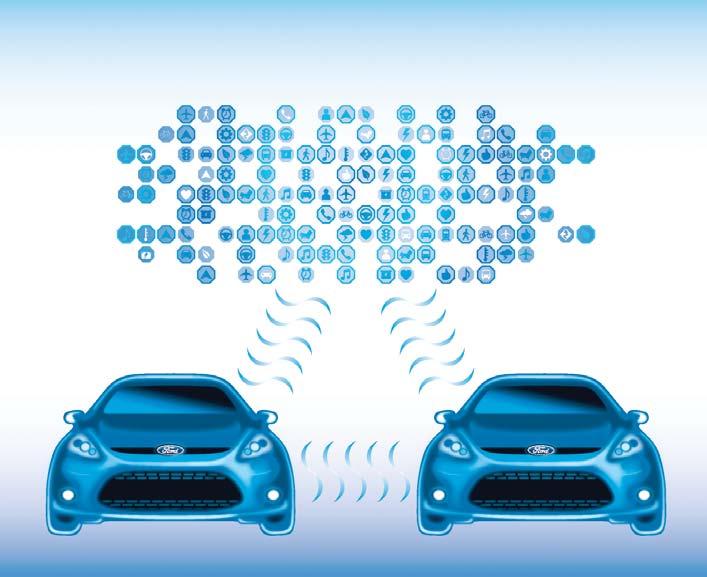
4 minute read
From cars to connected and intelligent cars
G. Kalyan Varma
Global Business Field, Electrical Business Stream Products - IMEA region, TÜV Rheinland
Advertisement
He has been involved in tesƟ ng and cerƟ fi caƟ on for over 17 years in a variety of roles and has played a vital role in establishing TUV Rheinland’s tesƟ ng and cerƟ fi caƟ on services in India.
of these problems. ITS technologies are being deployed at all levels & by all concerned stakeholders in the transportaƟ on ecosystem. MoRTH, the apex body of transportaƟ on has already published a policy document on vehicle tracking systems (VTS) & CCTV systems for being deployed across all public vehicles in the country. Some state governments have already implemented the mandate of equipping all public vehicles with these tracking systems. These VTS systems are capable of relaying live videos to the backend along with locaƟ on coordinates. The system comes with a SOS buƩ on to alarm the command center regarding safety & security of the passengers. The live data of all these public vehicles are being monitored at the central command servers. These VTS systems are also being used to ensure the entry of only authorized vehicles in the mining fi elds of Orissa. This is a classic example of ITS technologies contribuƟ ng towards safety, security. With the visible advantages it has, the VTS systems might be included as an OEM fi tment in the coming years.
While travelling on the Indian roads, one oŌ en comes across the persistent problems of incessant traffi c jams, long queues at the toll booths, mixing of traffi c on roads by diff erent vehicles, i.e. same roads used by high speed cars, trucks, 2 wheelers, cyclists and even animals. Safety & security needs to be ensured while people are on the move. As per Ministry of StaƟ sƟ cs, Govt. of India, 1, 69,107 lives were lost on the Indian roads due to road accidents alone in 2014. Security of girls in the public vehicles has become a naƟ onal issue. PolluƟ on on the roads is bound to adversely aff ect the health of ciƟ zens if correct measures are not taken on Ɵ me. How and when are we going to address these issues?
The government has announced an ambiƟ ous plan, “all electric vehicles by 2030”. This means no gasoline vehicles on the road 2030 onwards. Most of the OEMs are already working on their electric vehicles. However, a lot of work would go into creaƟ ng the charging infrastructure. The petrol pumps would need to be replaced by charging staƟ ons. The cost implicaƟ on of such transformaƟ on would be signifi cant. Also what would happen to the exisƟ ng gasoline vehicles is another quesƟ on? But there are innovaƟ ve ways in which we could build up on our exisƟ ng infrastructure & save on the costs, e.g. converƟ ng the exisƟ ng electric poles to double up as the charging points. In this way, we could also save on the wiring and installaƟ on acƟ viƟ es & overheads. The retrofi t hybrid module may convert the exisƟ ng gasoline vehicles into the electric vehicles directly.
Intelligent transportaƟ on Systems (ITS) seems to provide a soluƟ on for many

The other technologies such as V2X communicaƟ on, advanced driver assisted systems (ADAS), driver drowsiness systems (DDS), interoperable RFID cards & transceivers at all tolls across the country are some of the other technologies which are being developed & deployed by the industry. A lot of these systems communicate over the RF or internet and hence we need to also build a protocol regarding data exchange. Since every coin has two sides, cyber security would need to be properly ensured before deploying such systems on a mass scale.
But the quesƟ on arises! Are we ready for this change? Is our infrastructure robust enough to handle & safeguard the amount of data that would be on the web when these systems are deployed on a country level? Is a protocol standard set for the communicaƟ on fl ow & informaƟ on exchange between these devices? These quesƟ ons must be discussed & proper framework needs to be prepared before

we take a giant leap into the world of connected cars.
“The dream of connected & intelligent cars built on a safe, secure & reliable plaƞ orm is gradually becoming a reality with the joint iniƟ aƟ ve of the industry and the government. The car would essenƟ ally become a connected device which would communicate with everything around (man, machine and infrastructure). Hence, a protocol standard would need to be developed to ensure proper protocols for communicaƟ on fl ow and informaƟ on exchange between the diff erent stakeholders to ensure safety & security of sensiƟ ve data.”
To play our part in this complete ecosystem, we at TUV Rheinland (India) Pvt. Ltd. have equipped ourselves with the state-of-the-art faciliƟ es to test and validate all of these new systems & technologies from the reliability, EMC and wireless perspecƟ ves to ensure that a safe, reliable and secure product enters the market. We also provide trainings and services in the fi eld of conformity of producƟ on (COP) for automoƟ ve components and vehicles.










